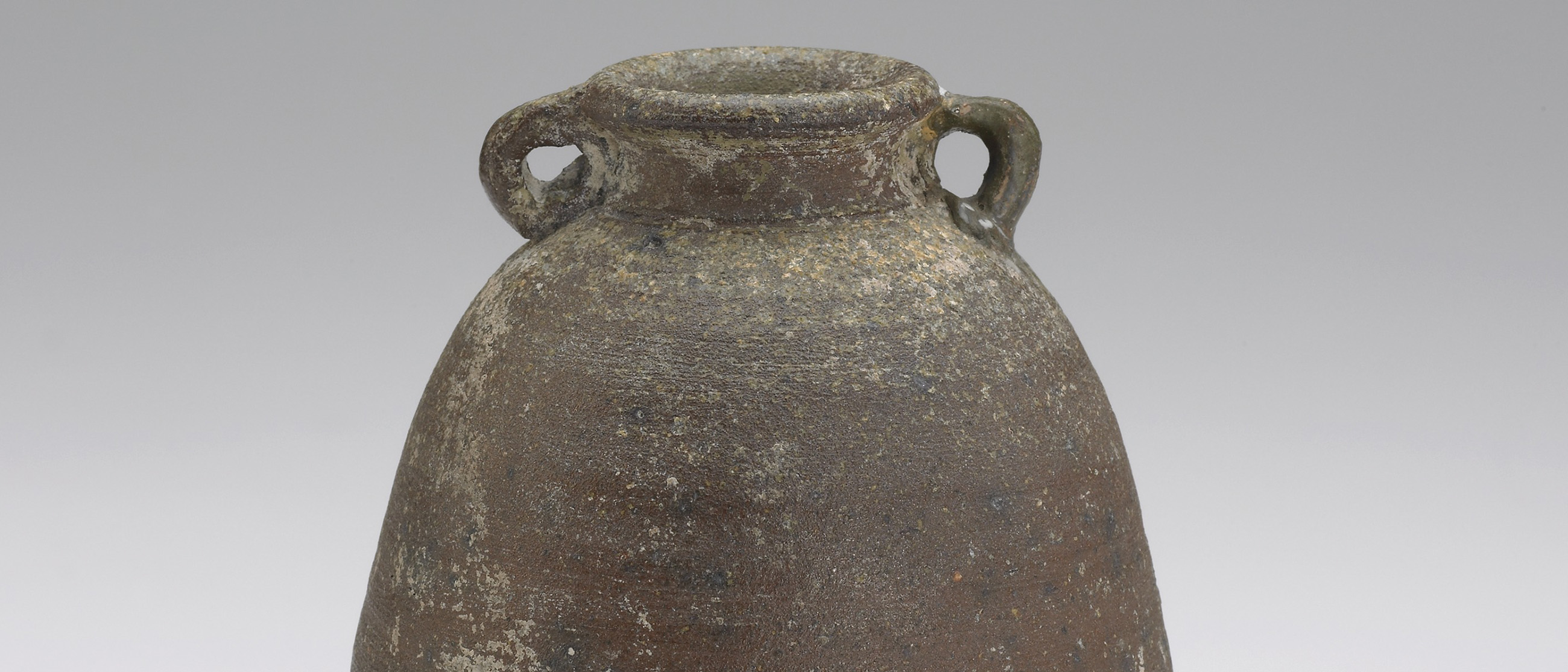UNGLAZED STONEWARE
View all related objects in the collections
In the shadow of the glazed wares that were more immediately attractive to modern eyes, enormous quantities of unglazed stoneware vessels were also produced in Mainland Southeast Asia, beginning with the earliest use of crossdraft kilns in the region.
The shapes of early unglazed stoneware jars appear to be associated with jar shapes introduced to the region from South Asia, notably the “baluster jar” and its descendants. Introduced from India, the curvaceous shape balances a trumpet mouth with sculpted rim atop a high, rounded shoulder tapering to a narrow base and flaring foot. Jars of this type were made at the kilns in the Angkor region by the tenth century (Aoyagi and Sasaki 2007); at the Ban Bang Pun kilns in Suphanburi province, Thailand; and at Sawankhalok, Sukhothai, and Phitsanulok kilns in North-central Thailand. Related jar forms were made at the Si Sattanak kilns in Vientiane (Hein and Thoungsa 1989) and at the kilns along the Songkhram River in Northeast Thailand, among other locations.
This unglazed jar form may be contrasted with another jar form, which sits on a broad base and bears a thick rolled rim on a short neck and a set of loop handles or lugs (typically four) on the shoulder. This form, typically glazed, may have been introduced by Chinese commercial shipping jars. In Mainland Southeast Asia these two contrasting ideas about the forms of jars coexisted and mingled in local stoneware production. In many cases, the same kilns made both jar forms. Stoneware jars made after these models are found in different spheres of activity: the Indian form mainly for ceremony and ritual, and the Chinese for commerce.
Jars of the “South Asian” type are often found buried with cremated human remains (Hein, Burns, and Richards 1985), but they also served utilitarian purposes, as exemplified by the large Ban Bang Pun jars found on shipwrecks dating to the fourteenth and early fifteenth centuries and excavated in Japan (Brown 2004; Sakai-shi Hakubutsukan 1993). In a curious episode, one Ban Bang Pun baluster jar with stamped elephant motifs was handed down as a shrine relic in Kagoshima prefecture, southern Japan, and replicated by local potters in the mid-nineteenth century (Kira 1993/94–95).
Unglazed stoneware vessels of less elaborate forms were also made specifically as containers for commercial products and participated in local, regional, and international trade. Unglazed jars made at kilns in North and coastal Central Vietnam reached Japan just as Japanese participants in chanoyu (the tea ceremony) were intensely interested in discovering new varieties of ceramic utensils. Enhanced by their exotic origins, the rough-textured, unevenly colored jars were deemed a suitable embodiment of a more introspective and austere form of tea aesthetic. Known as “namban” (southern barbarian) wares, they were transformed into water jars and vases (Nezu Bijutsukan ed. 1993; Chadō Shiryōkan 2002). Although Japan connoisseurs are well known for their appreciation of Japanese unglazed stoneware, this viewpoint may have originated through encounters with unglazed vessels from Mainland Southeast Asia (Cort 1979, 197).

